Introduction
In today’s rapidly evolving technological landscape, the role of an RPA Developer has become increasingly pivotal for organizations striving to enhance operational efficiency through automation. These specialized IT professionals are at the forefront of crafting and deploying Robotic Process Automation (RPA) solutions that streamline repetitive tasks, thereby driving productivity and reducing costs. By collaborating closely with business analysts and stakeholders, RPA Developers identify key processes for automation, ensuring solutions are tailored to meet organizational needs and compliance standards.
This article delves into the multifaceted responsibilities of RPA Developers, from analyzing business processes and designing automation workflows to coding, testing, and integrating RPA solutions with existing systems. It also highlights the essential skills required for success in this dynamic field and explores the promising career paths available for those who excel in RPA development. Through real-world examples and expert insights, discover how RPA Developers play a crucial role in transforming routine tasks into seamless automated operations, ultimately empowering organizations to achieve their strategic goals.
What is an RPA Developer?
An RPA Developer is a specialized IT professional dedicated to crafting, developing, and deploying Robotic Process Automation (RPA) systems. They are pivotal in automating repetitive tasks within an organization, significantly boosting operational efficiency and productivity. By collaborating closely with business analysts and stakeholders, RPA Developers pinpoint processes suitable for mechanization, ensuring that the implementations align with organizational requirements and compliance standards. For instance, companies like St. James Winery have seen marked improvements in production efficiency and labor costs through RPA implementation. This success highlights the significance of ongoing observation and administration, as mechanization is not a set-it-and-forget-it solution. The partnership between RPA Developers and stakeholders is essential, as it promotes trust and ensures that the initiatives for mechanization are well-integrated and effective in achieving business goals. As highlighted by specialists, the collaboration between advanced technologies and strategic partnerships can enhance operational initiatives, making them more robust and aligned with business goals.
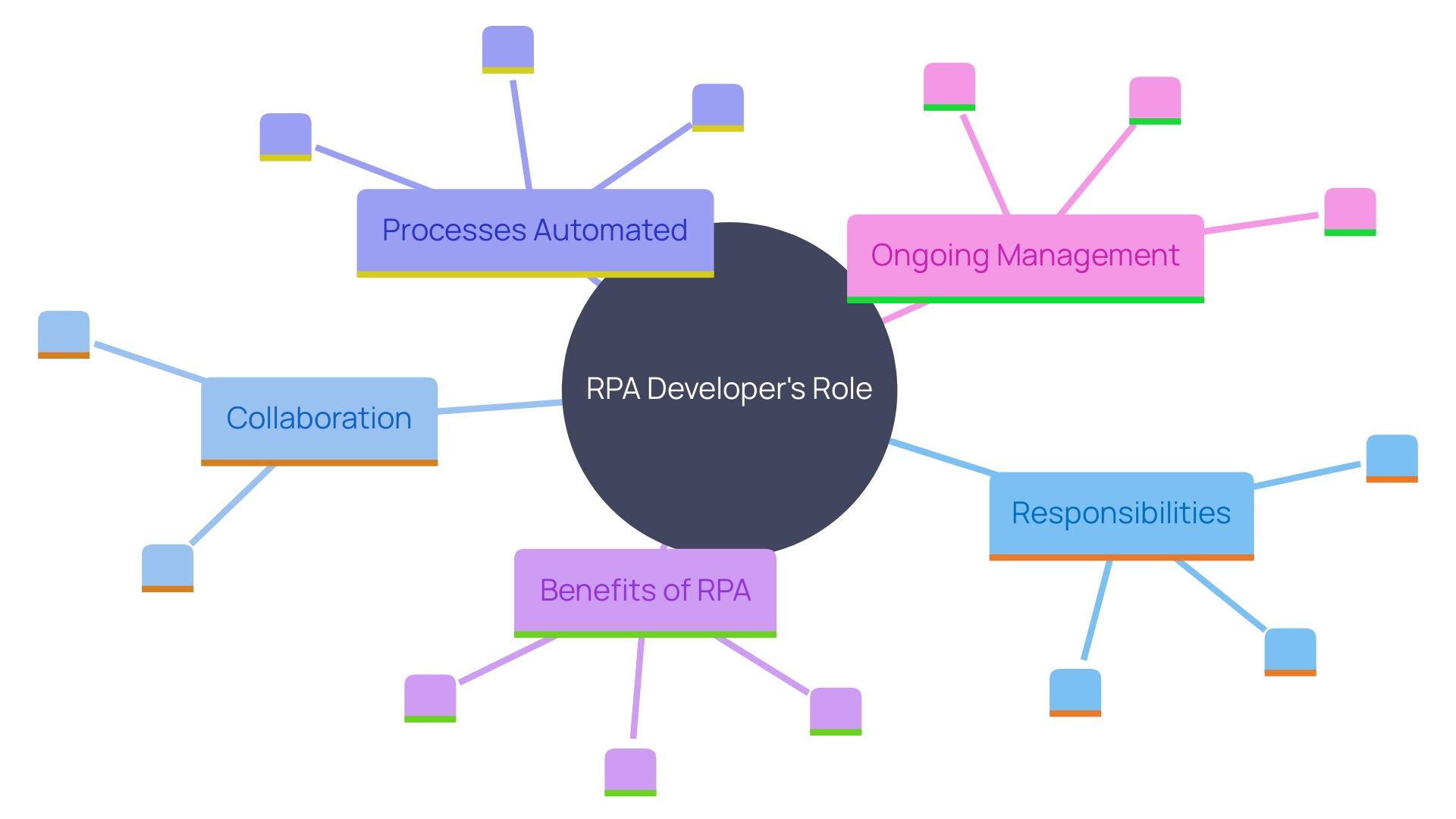
Key Roles and Responsibilities of an RPA Developer
RPA Developers play a crucial role in optimizing business processes and enhancing efficiency through mechanization. Their responsibilities encompass several critical tasks:
- Analyzing Business Processes: RPA developers begin by meticulously examining existing business processes to identify opportunities for automation, ensuring that only the most repetitive and time-consuming tasks are targeted for automation. This crucial step aids in maximizing the return on investment from RPA initiatives.
- Designing RPA Solutions: They design tailored RPA solutions that align perfectly with the unique requirements of the business. This involves selecting the appropriate tools and technologies to create strong automated processes.
- Creating Scripts for Automation: Utilizing top RPA tools, developers generate scripts and workflows. This phase includes writing code, configuring bots, and establishing the automation environment to ensure that tasks are executed flawlessly.
- Testing and Debugging: Rigorous testing and debugging are essential to guarantee the functionality and reliability of the automated processes. This step helps in identifying and rectifying any issues before deployment, ensuring smooth operation in a live environment.
- Integration with Existing Systems: RPA solutions must seamlessly integrate with the organization’s existing systems and applications. Developers ensure that the automation tools work harmoniously with other software, databases, and IT infrastructure.
- Maintaining and Monitoring Deployments: After deployment, RPA developers are responsible for maintaining and monitoring the automated systems to ensure they perform optimally. Continuous monitoring allows for quick identification of any performance issues or areas for improvement.
- Documenting Procedures: Thorough documentation of automated procedures and solutions is vital for future reference and compliance. This encompasses generating comprehensive documentation of the workflows, configurations, and any modifications implemented throughout the process lifecycle.
By fulfilling these roles, RPA developers play a pivotal part in helping organizations achieve their operational efficiency goals. They utilize their technical knowledge to convert routine tasks into automated systems, ultimately enhancing productivity and allowing employees to concentrate on more strategic activities.
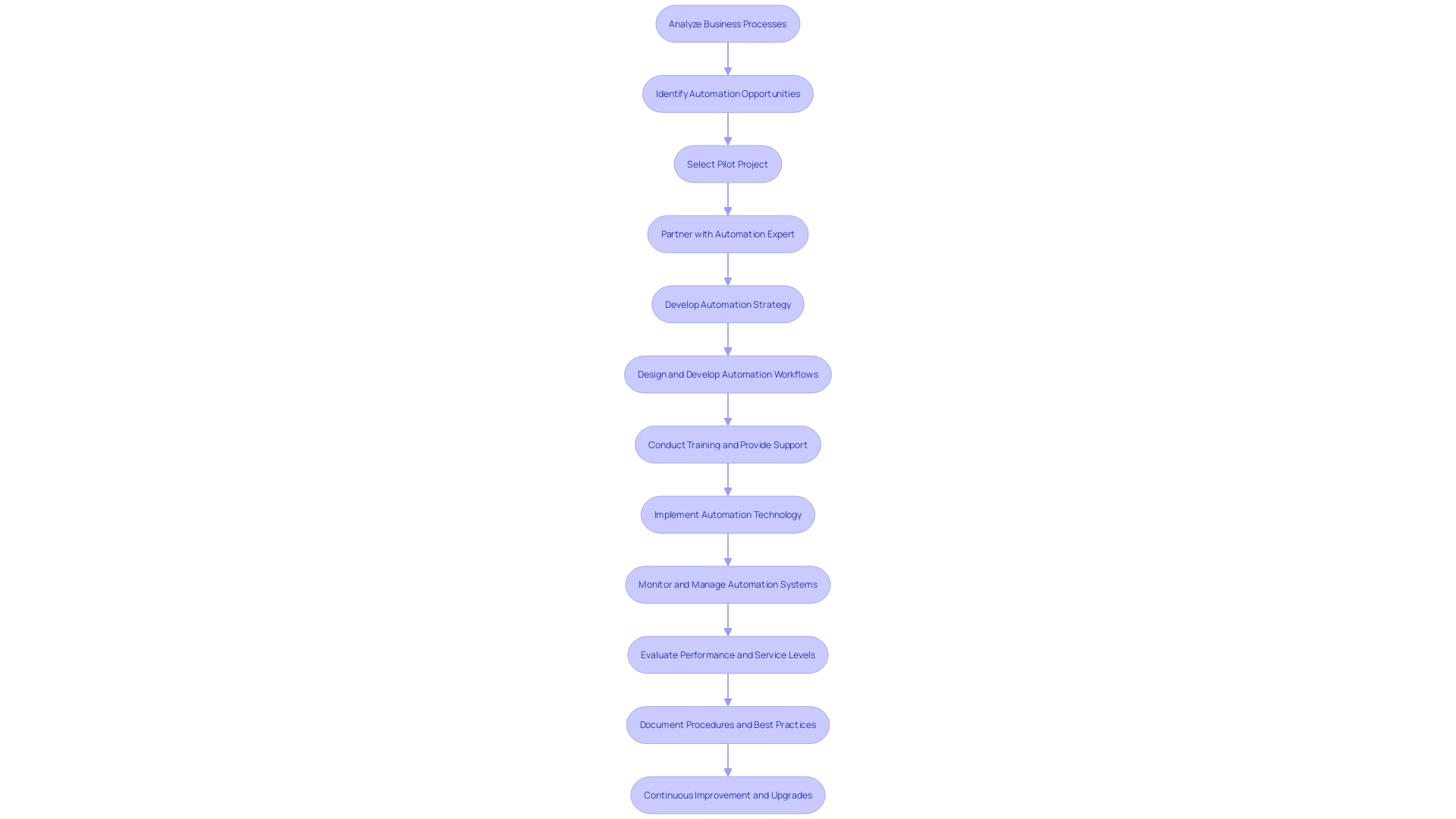
Process Analysis and Identification
The initial stage for an RPA Developer includes a comprehensive examination of business activities to determine which tasks are suitable for mechanization. This entails evaluating the volume, frequency, and complexity of tasks. Interacting with stakeholders and collecting information on existing operations aids in identifying bottlenecks and inefficiencies that can be addressed through RPA. Starting with smaller tasks before progressing to more complex workflows is a strategic approach. Continuous monitoring and documentation of results are crucial to ensure goals are met and to capture lessons learned for future projects. Smart technology, integrating RPA and AI, can greatly improve workflows, increase productivity, and support informed decision-making. This synergy is essential for realizing the complete potential of digital transformation, as demonstrated by companies effectively integrating intelligent workflows to manage supply chain operations.
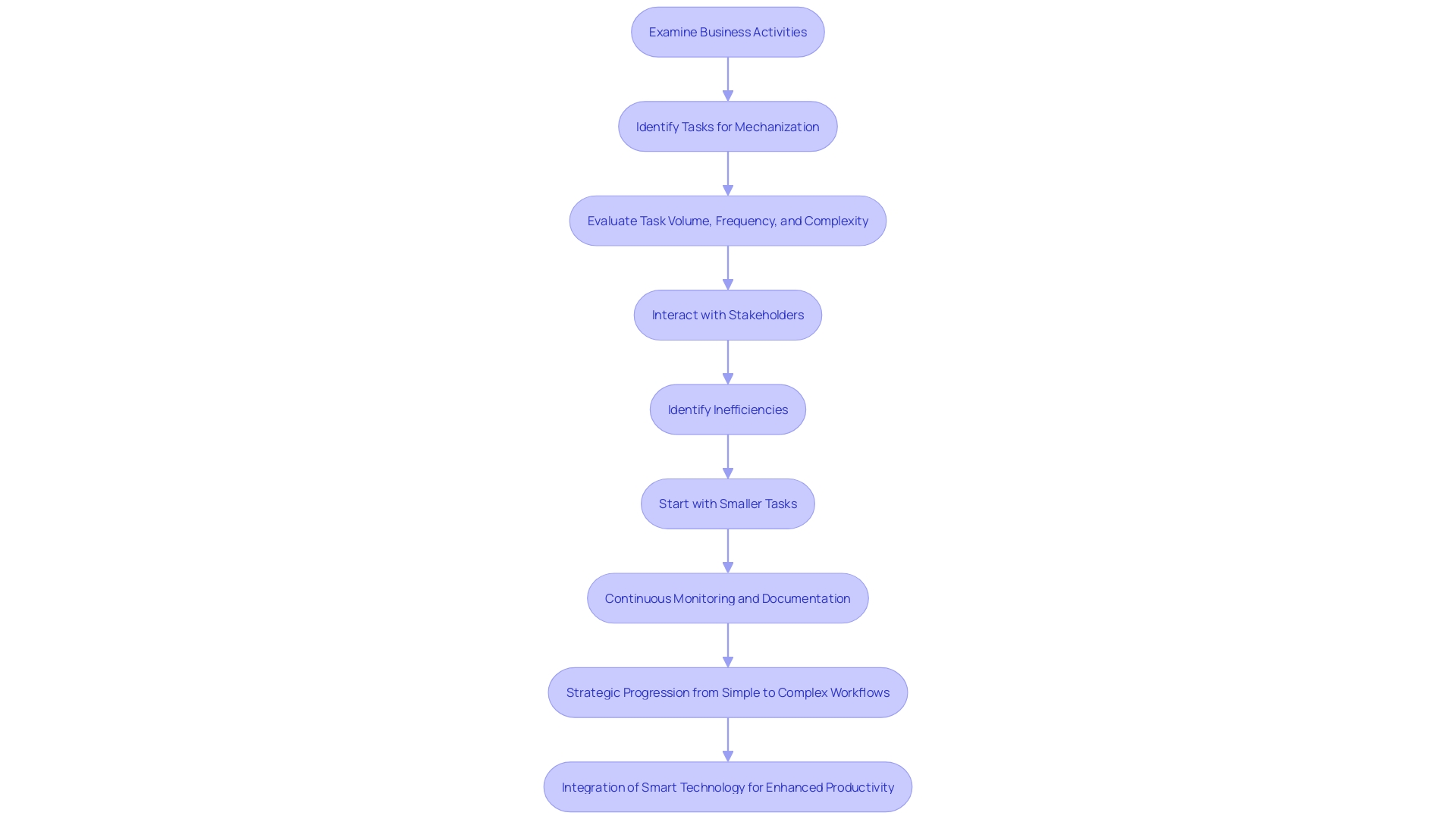
Designing and Developing RPA Solutions
Once processes designated for mechanization are identified, RPA developers move on to designing customized RPA solutions. This phase involves creating detailed specifications and workflows that meticulously outline the operational blueprint of the mechanization. For instance, developers may leverage advanced simulation models, like those from 1X Technologies, to predict real-world outcomes based on sensor data, ensuring accuracy and reducing the ‘sim2real gap’.
After the design phase, developers use RPA tools to build the automated process. This involves writing precise scripts capable of emulating human actions within the targeted processes. This step is similar to how KUKA, a global leader in automation, supports their offerings with comprehensive training, system engineering, and simulation, ensuring seamless implementation and operational efficiency.
By integrating these advanced tools and strategies, RPA developers not only replicate human actions but also enhance the scalability and flexibility of automated systems, allowing for rapid expansion and adaptation to new requirements with minimal effort.
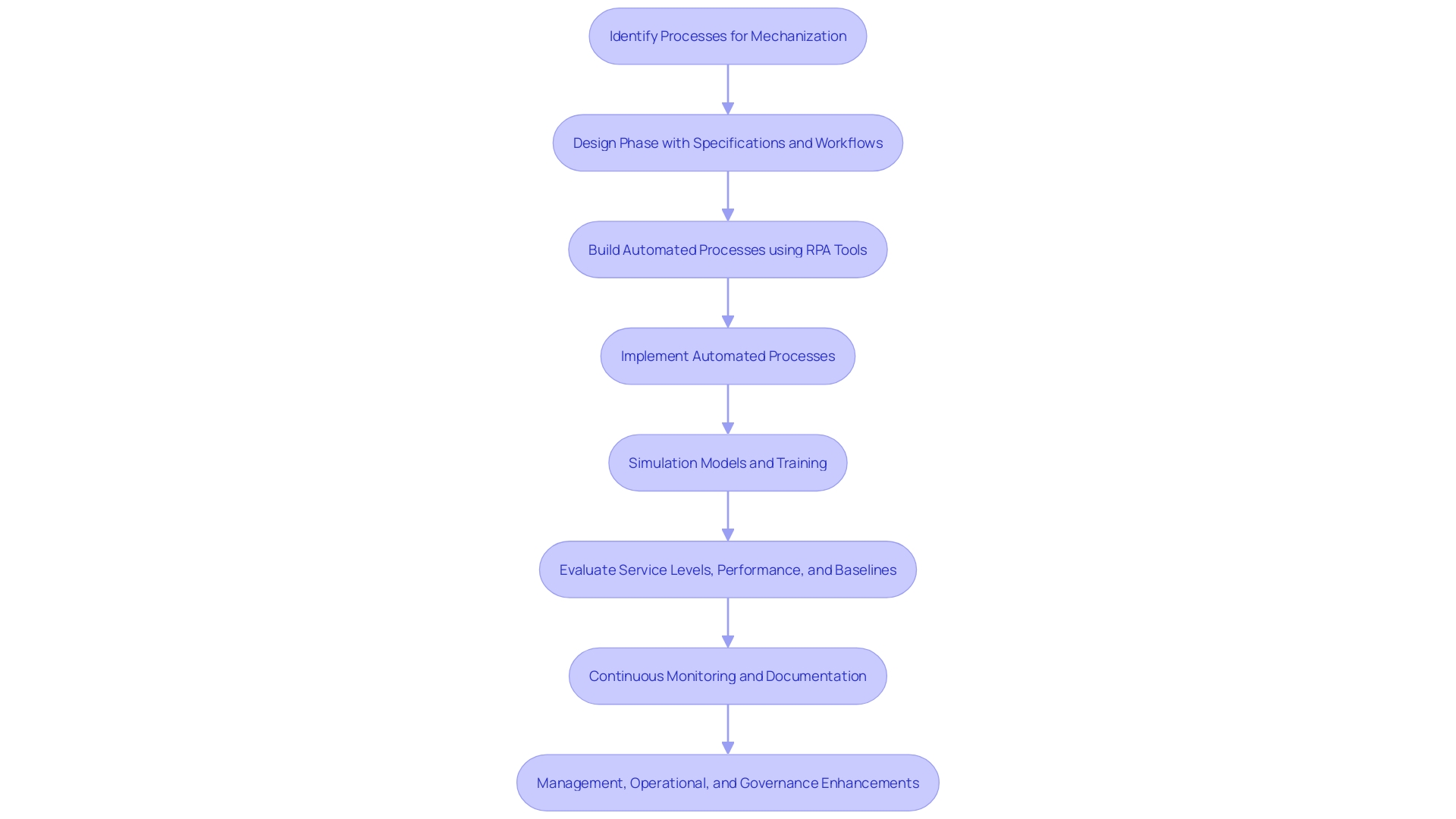
Coding and Scripting
RPA developers are frequently needed to create customized approaches by writing code or scripts, enhancing the functionality of RPA tools to meet specific business requirements. Mastery of programming languages such as Python, Java, or. NET is crucial for this customization. The ability to code allows developers to implement complex logic and create tailored solutions that go beyond the standard capabilities of RPA platforms. This guarantees that automated systems are not only efficient but also extremely flexible to the distinct challenges encountered by organizations. Cultivating these abilities strengthens the workforce and enhances operational procedures, utilizing the true potential of AI-driven technology.
Testing and Debugging
Once the automation is developed, thorough testing becomes indispensable. RPA developers participate in various testing stages to guarantee that the system operates exactly as planned. This process involves unit testing, which verifies individual components, integration testing to ensure different parts function together seamlessly, and user acceptance testing to confirm the result meets business requirements. Debugging plays a crucial role, as it involves identifying and resolving any issues or errors in the automation. This rigorous approach ensures consistency, accuracy, and comprehensive test coverage, significantly reducing the risk of human error and enhancing overall efficiency.
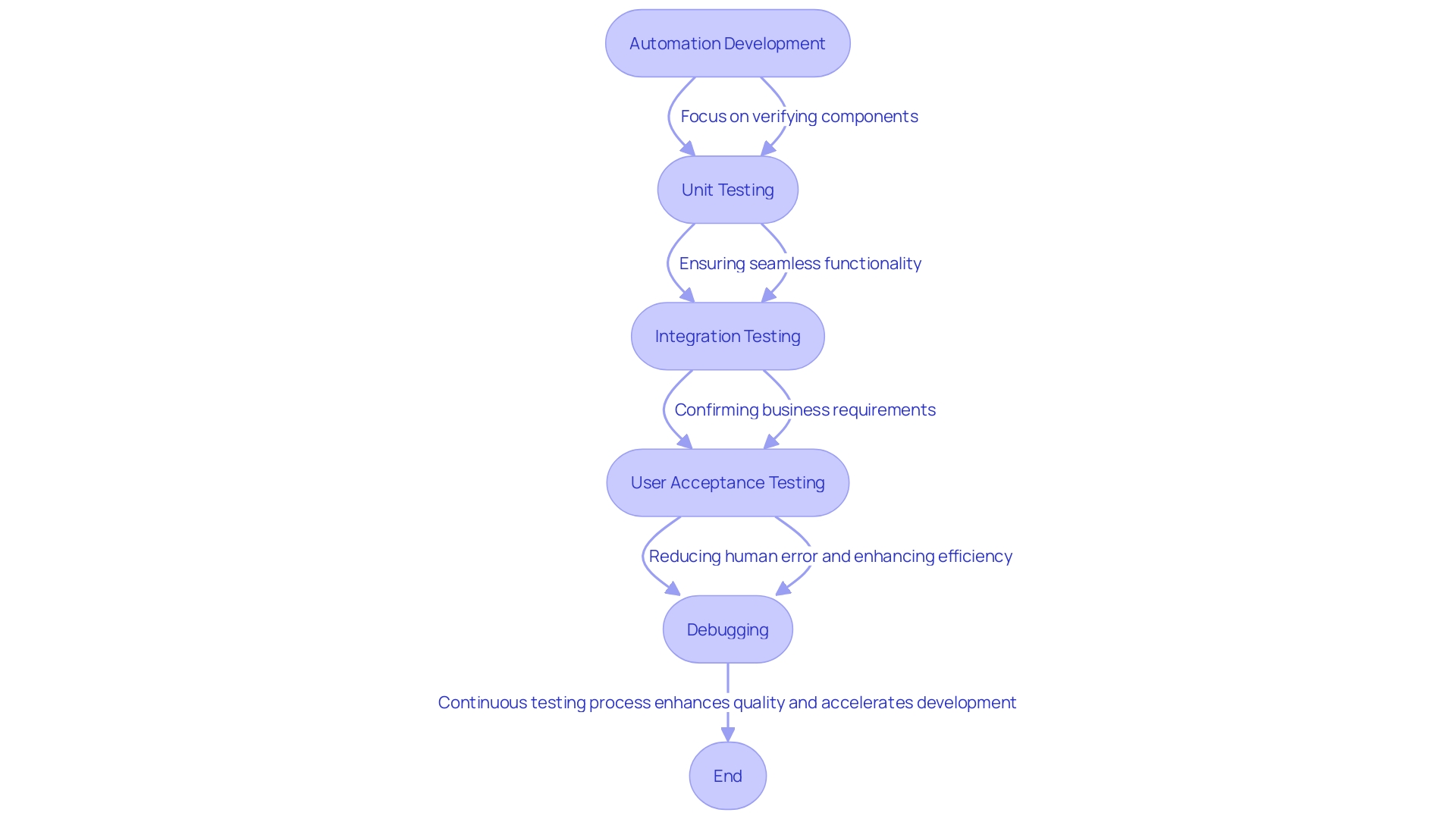
Integration with Existing Systems
For RPA solutions to be effective, they must seamlessly integrate with existing systems and applications. RPA developers are essential in linking automated workflows with other software, databases, and tools within the organization. This integration is vital for ensuring that data flows smoothly between systems and that automated tasks can interact with other business operations.
The importance of integration becomes evident in real-world applications. For example, the partnership between Redox and Ambience significantly improved the adoption of Ambience products by leveraging Redox’s expertise in healthcare interoperability standards. This allowed Ambience to focus on perfecting their products rather than managing integration challenges with each new customer. Similarly, the HUD’s innovative use of RPA to monitor housing contract expirations showcased how RPA could overcome constraints of outdated systems, achieving operational resilience and efficiency.
Moreover, a staggering 90% of mechanization projects fail due to technical issues, highlighting the importance of seamless integration. Successful integration not only streamlines workflows but also saves time and money. For instance, the healthcare sector, which excels in workflow optimization, observes 93% of hospitals adopting process streamlining to enhance operational efficiency.
Incorporating RPA into existing systems requires strategic partnerships and expert guidance. As the technological environment changes, the collaboration between mechanization and sophisticated methods becomes ever more crucial. Organizations that embrace this holistic approach position themselves for success in the ever-evolving automation landscape.
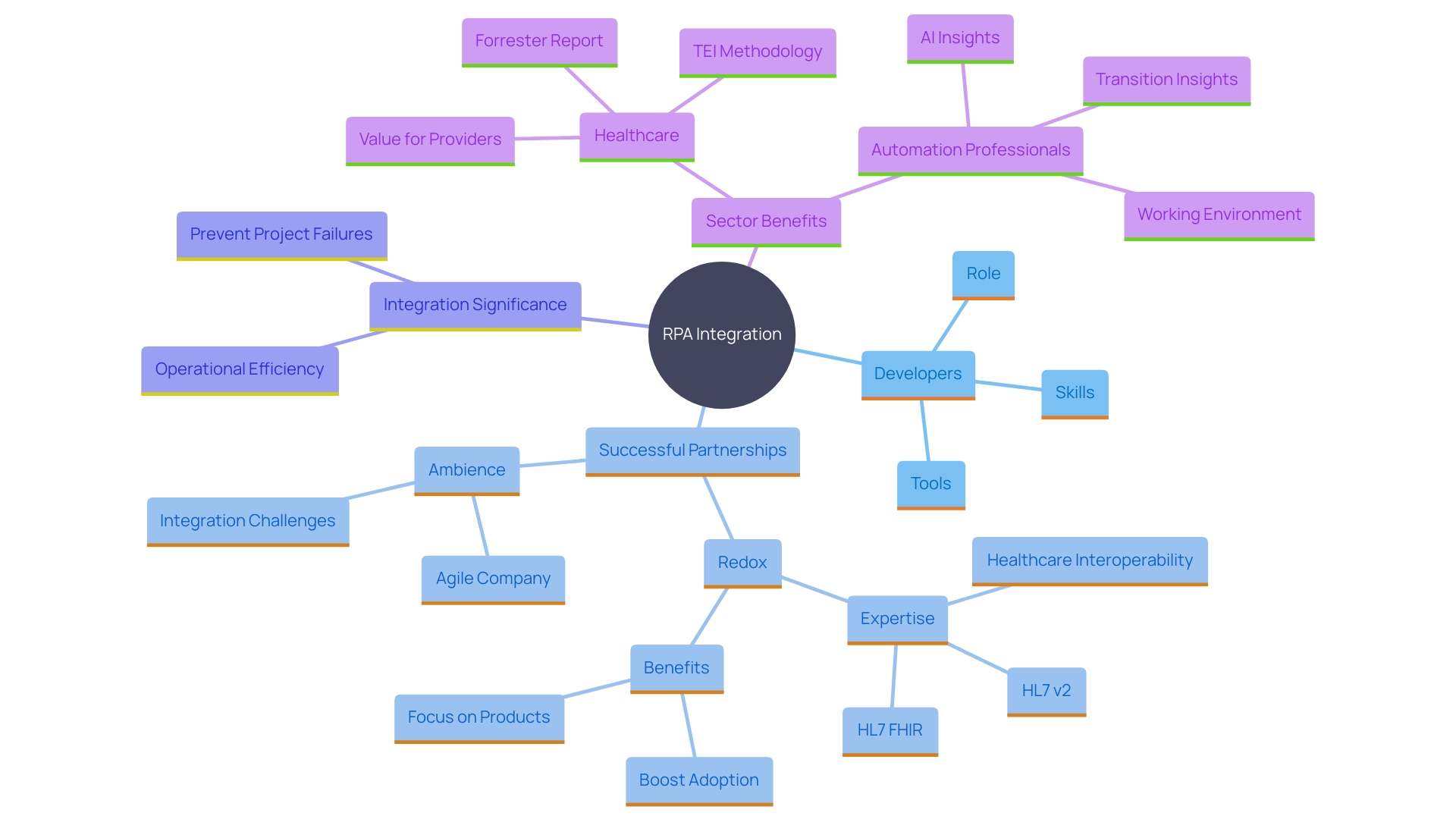
Maintenance and Monitoring
Post-deployment, RPA Developers are responsible for the ongoing maintenance and monitoring of RPA solutions. This involves tracking performance metrics such as robot utilization, throughput, cycle time, error rates, and cost savings. Ensuring compliance with business rules and adjusting as needed to accommodate changes in processes or technology is crucial.
Regular monitoring, as emphasized by Mark Twain’s approach to getting ahead by starting, helps establish a proactive foundation. By setting an accurate baseline, developers can confidently forecast and make effective maintenance plans. This proactive strategy aligns with the predictive maintenance approach, preventing operational issues before they escalate.
Organizations must close any management, operational, and governance gaps with additional software tools, clear roles, and responsibilities to ensure effective RPA function. As mechanization continues to evolve, maintaining a partnership between human oversight and RPA is essential for stability and efficiency.
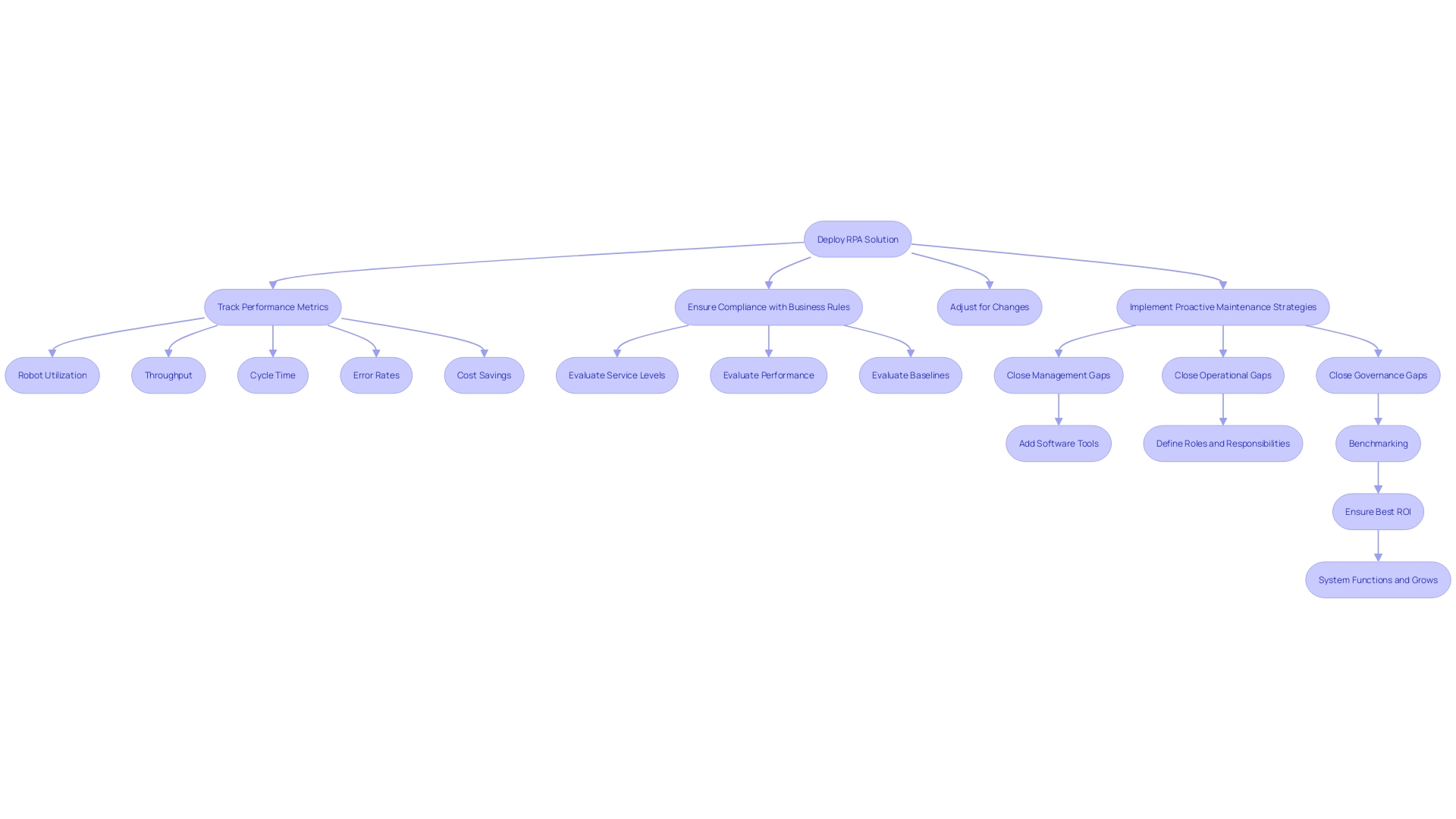
Documentation
Thorough documentation is a critical task for RPA Developers, as it forms the foundation for successful automation projects. This method entails outlining design specifications, code, testing protocols, and maintenance procedures. Comprehensive documentation ensures consistency and accuracy, which is vital for compliance and future updates. It also improves cooperation among team members, enabling more efficient and effective development activities.
Recording the complete procedure not only decreases mistakes and oversights but also acts as a helpful asset for integrating new team members, greatly shortening the time required for them to become efficient. By leveraging AI-driven tools, developers can maintain up-to-date documentation that accurately reflects the current state of the codebase. This method facilitates the smooth incorporation of automated systems into current workflows, aligning with the strategic objectives of the organization and ensuring the stability and efficiency of RPA initiatives.
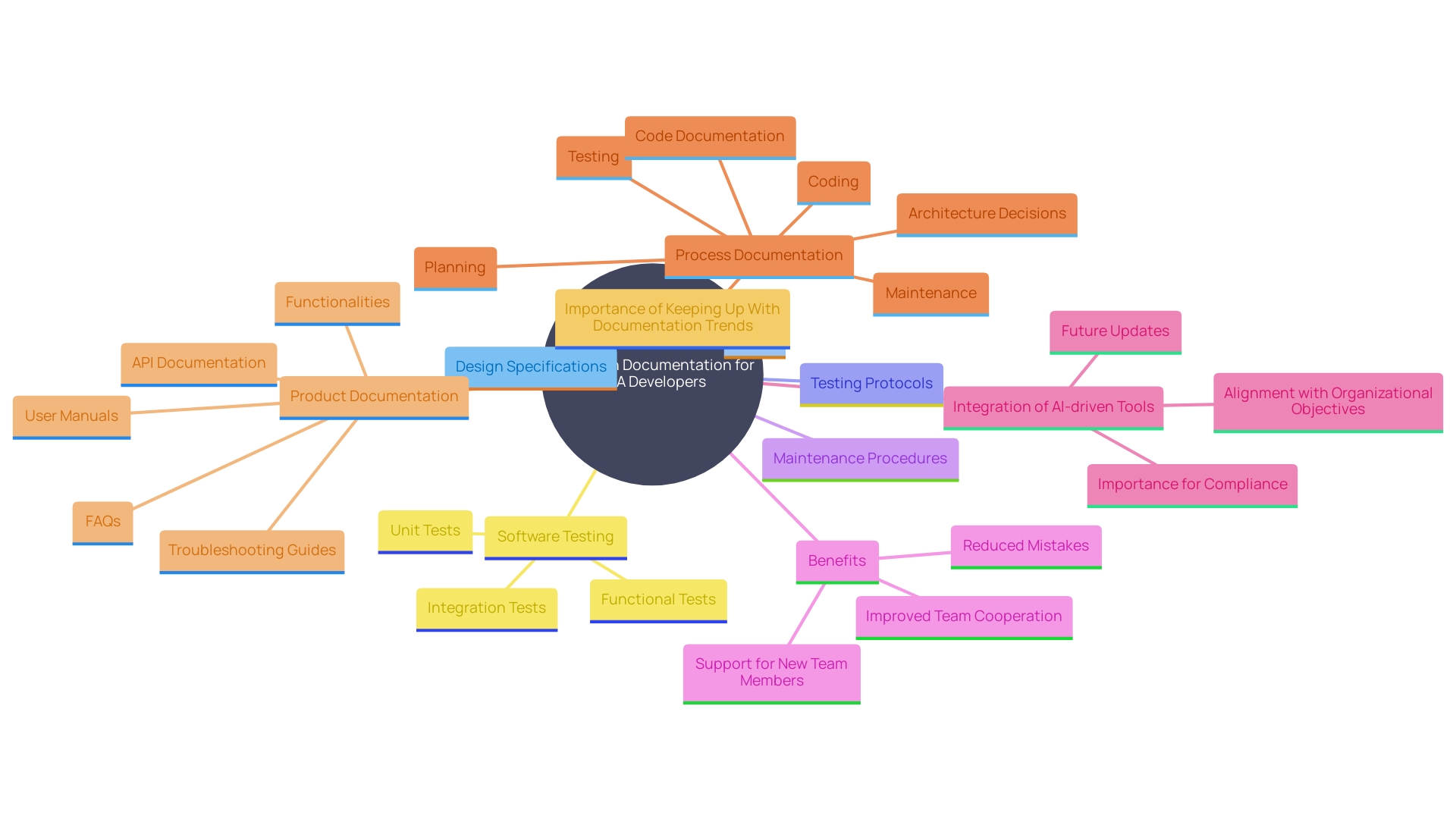
Essential Skills for RPA Developers
Successful RPA Developers possess a unique set of skills that set them apart. They have:
- Strong Analytical Abilities: These are essential for assessing processes and determining their automation potential.
- Programming Proficiency: Knowledge of programming languages relevant to RPA tool development is crucial, including languages like Java within top-tier categories.
- Familiarity with RPA Tools: Proficiency in tools like UiPath, Blue Prism, or Automation Anywhere is necessary. These platforms are essential for implementing efficient mechanization approaches.
- Problem-Solving Skills: The capability to troubleshoot and enhance automated solutions is essential for guaranteeing smooth operation and addressing problems effectively.
- Effective Communication Skills: These are necessary to collaborate with stakeholders and convey technical information clearly. Knowledge-sharing meetings and workshops play a key role in fostering this communication.
Moreover, RPA developers are at the forefront of technological integration, often working with evolving platforms and participating in continuous learning. This dynamic environment not only challenges them intellectually but also allows them to make significant impacts by streamlining operations and improving efficiency. As the demand for skilled RPA developers grows, so do the opportunities for making a meaningful contribution to the field.
Career Path and Job Roles for RPA Developers
The career trajectory for RPA Developers is multifaceted, often commencing with positions such as Junior Developer or Business Analyst. As professionals acquire experience and knowledge, they progress to Senior Developer roles or managerial positions, supervising extensive project implementations. Notably, the field offers specialization opportunities in areas like RPA architecture or consultancy, where seasoned professionals can lead organizations in strategizing and implementing automation initiatives. Continuous learning and adaptation are pivotal in this dynamic career path, reflecting the ever-evolving nature of technology. According to recent statistics, the demand for AI and ML specialists has surged by 35% year-over-year, underscoring the critical need for skills in developing and managing AI/ML models. This trend is mirrored in the RPA domain, where technical skills are highly valued and essential for driving business efficiencies and innovation. Moreover, the global tech sector has expanded significantly, with the number of professional developers worldwide reaching approximately 13.4 million by 2023. This growth highlights the increasing opportunities for RPA Developers to make significant impacts within their organizations. As the industry continues to evolve, professionals equipped with the right blend of technical acumen and business insight will find rewarding and intellectually stimulating careers in RPA development.
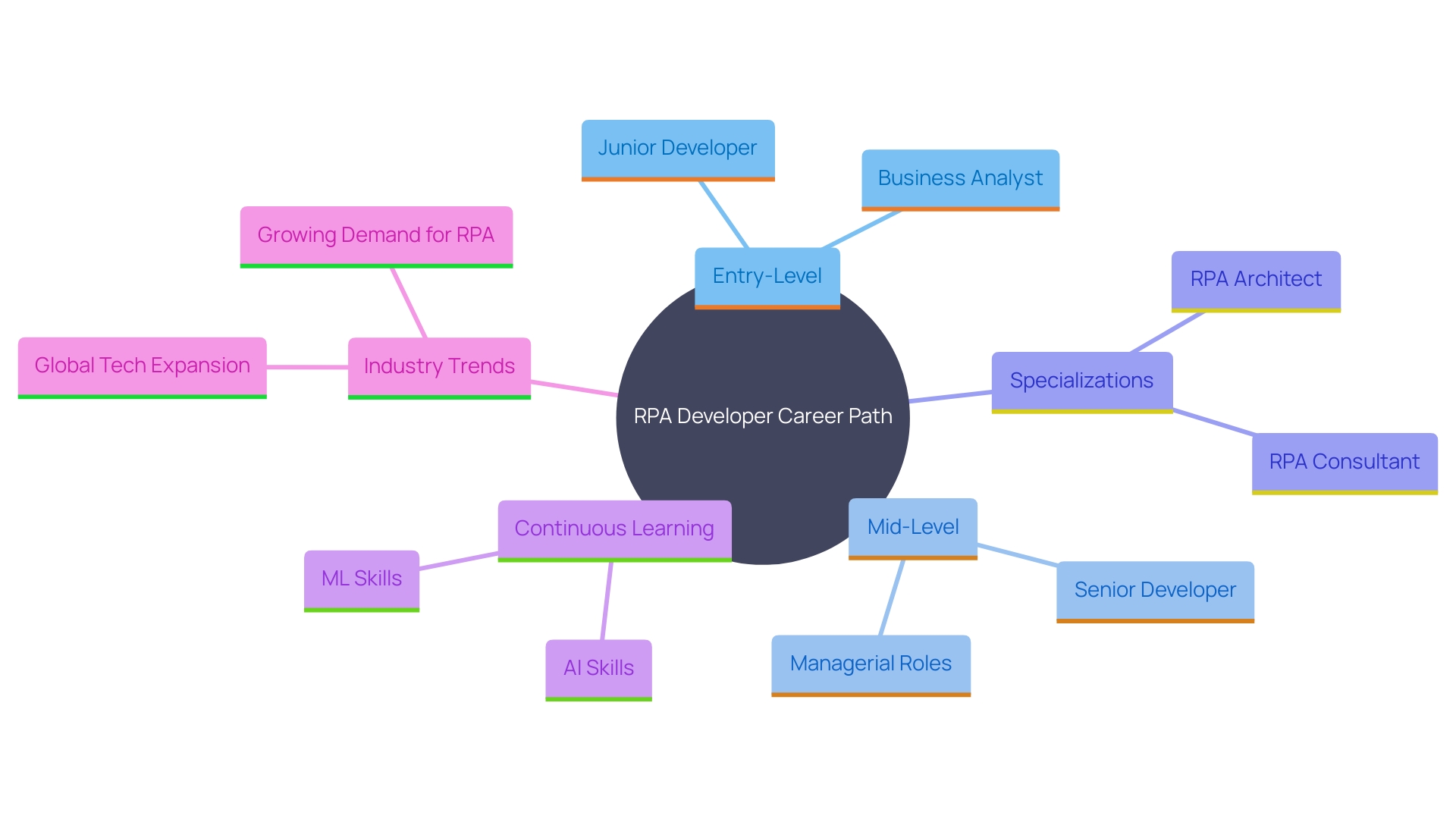
Conclusion
The role of an RPA Developer is integral to the advancement of automation within organizations, driving efficiency and enhancing productivity. By meticulously analyzing business processes, designing tailored solutions, and ensuring seamless integration with existing systems, RPA Developers empower organizations to optimize their operations. The collaboration between developers and stakeholders is essential, fostering an environment where automation initiatives can thrive and deliver measurable results.
Maintaining and monitoring RPA solutions post-deployment is equally important, as it ensures that automated processes continue to meet evolving business needs. Through rigorous testing, thorough documentation, and proactive maintenance, RPA Developers can safeguard the integrity and efficiency of automation efforts. Furthermore, the demand for skilled RPA Developers is on the rise, reflecting the broader trend in technology toward increased automation and intelligent workflows.
In conclusion, RPA Developers are not just technical experts but strategic partners in the journey toward operational excellence. By embracing the opportunities presented by automation, organizations position themselves to achieve their strategic goals and remain competitive in an ever-evolving landscape. The future of work is increasingly automated, and with the right talent in place, businesses can unlock new levels of efficiency and innovation.

